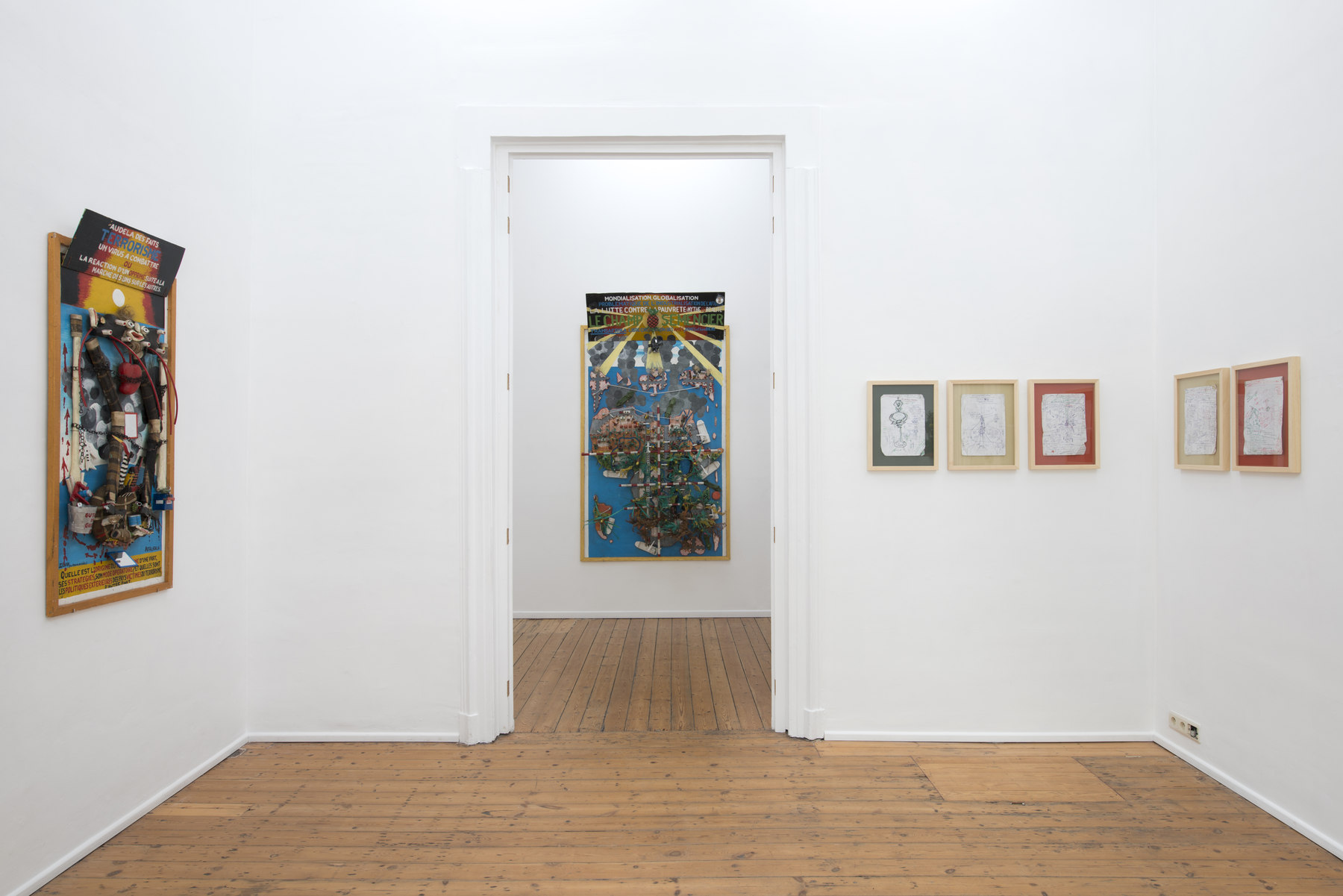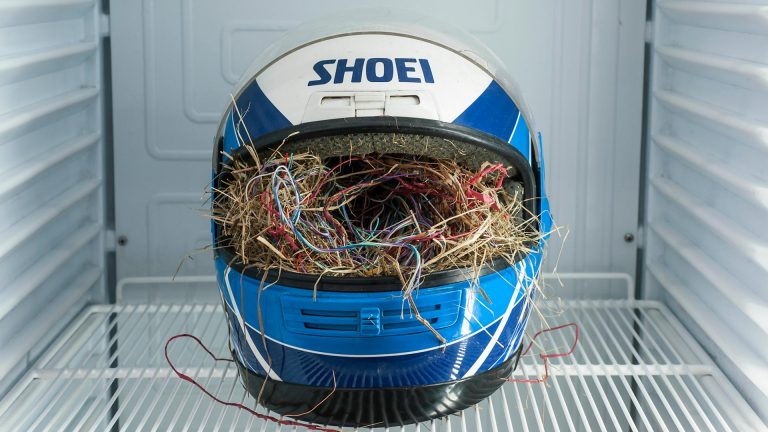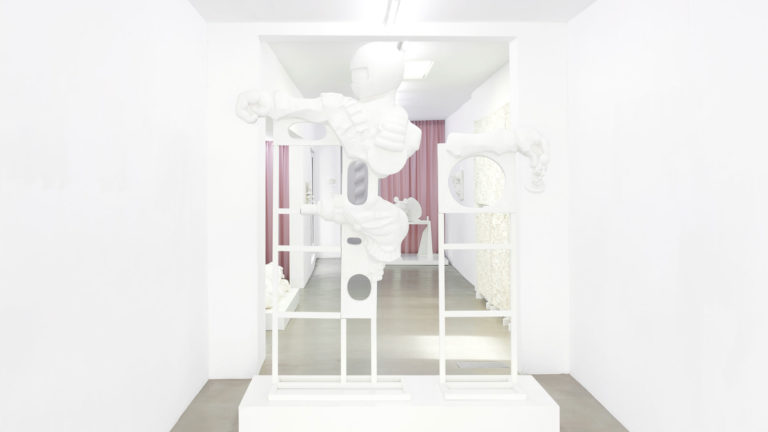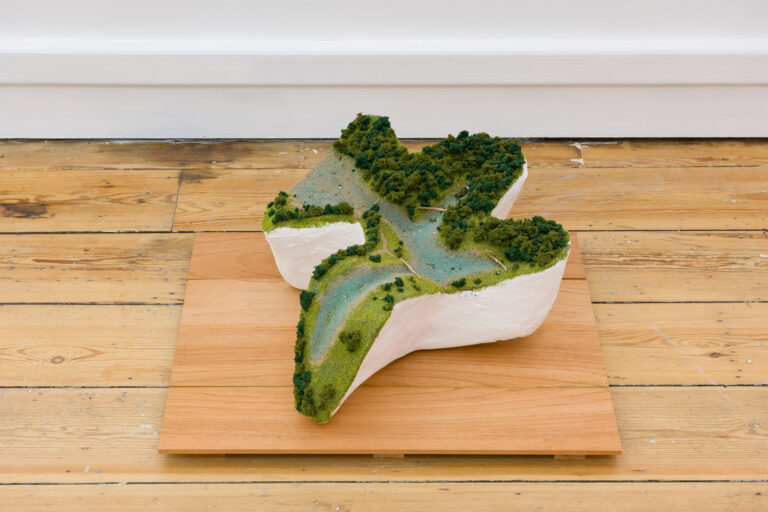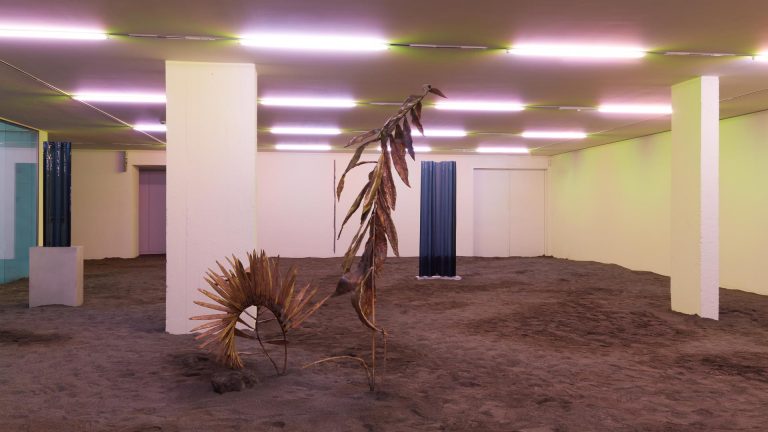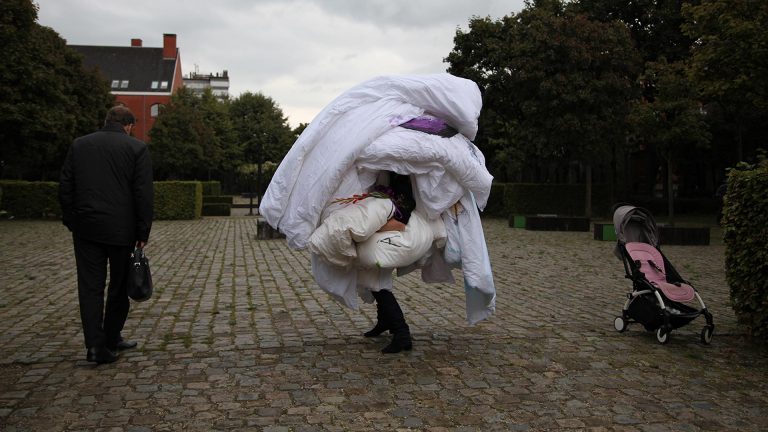Artist: Emmanuel Botalatala
Exhibition title: L’Afrique sait innover
Venue: trampoline, Antwerp, Belgium
Date: June 10 – July 1, 2017
Photography: all images copyright and courtesy of the artist and trampoline
Botalatala, the non-academic
In each interview Botalatala stresses the self-taught nature of his artistic practice and underlines the fact that he’s never benefited from any academic training. Creating his own myth, Botalatala situates his artistic roots in his youth in the Democratic Republic of Congo. He was born in Kisangani on March 9 1951 and in the late fifties he went to a school run by English Baptist Church missionaries. It’s in their classrooms that he learned to make all sorts of things (straw mats, baskets etc.). That’s also where he, together with his classmates, made his first miniature objects at the request of a certain Mr. Mathieu. Those were then glued to a board of plywood according to specific topics (agriculture, music, etc.) and carried off to London in 1964 never to come back to Congo. None of the pupils or the teachers, including the mission’s principal, was aware of any possible artistic quality of these artefacts.
After his mathematics studies at the Kinshasa university between 1974 and 1978, he was first a teacher, then an employee at the Banque Commerciale Congolaise, but he didn’t start his artistic career until the early eighties during a spell of unemployment. Because he wanted to brighten up the walls of his house, he drew on his childhood memories and constructed pieces akin to what he made at the protestant mission. The positive reaction of his neighbours, who asked him to produce similar works, gave him the idea to support himself by selling these small painted works in the bars of the capital for the ridiculously low price of a bottle of beer. It was the local community that provided the theme of traditional crafts for his next works (cook, carpenter, etc.). Botalatala provided a window on Congolese society illustrating the different aspects of traditional daily life (hunting, fishing, agriculture, village life), sometimes copying the political slogans of the day (“Agriculture, basis for all development!”, “Agriculture, the priority of priorities!”
Botalatala, the committed artist
In the late 1980ies the chance meeting, in a bar in Kinshasa, of a counsellor at the French Cultural Centre, who was interested in his pictures, had a profound effect on Botalatala’s art. The opportunity of showing his work in other places besides the Kinshasa streets, allowed him to come into contact with a better informed and more educated, new public. The French and Belgian cultural institutions became a haven of artistic development while at the same time Botalatala felt a new democratic wind in his native country. He no longer made the subjects of his paintings dependent on possible buyers. As a keen radio listener, from now on he reacted to national and international news. The Iraq invasion, the National Sovereign Conference (1990-1992) or the massacre of Christians in Kinshasa during the March of Hope in 1992 are some of the events addressed in his paintings.
From then on Botalatala renounces what he calls “art to please” and becomes a committed artist. Convinced that the artist can play a role in the civil education or in the electoral process by raising public awareness, he takes a critical eye on the world. A course of media training in Kinsangani from 1993 to 2003 sharpens his analytical mind and helps him to develop his personal view on the growing complexity of political and socioeconomic problems (terrorism, street children, offences against the dignity of women, clandestine immigration, etc.). In order to avoid legal prosecution or misconduct at the hand of the one-party regime police Botalatala adopts a specific rhetoric, notably characterised by the use of “or” in the titles of his works. No-one can accuse him of taking sides as his paintings only raise questions. Still, aware of the risks that opponents of the regime run, Botalatala shows some paintings only to a select public.
Botalatala, the didactic art militant
Botalatala stresses that his art is fundamentally “didactic”. Wanting to ensure a maximal legibility and comprehensibility of the message in his works he has always constructed his paintings in the same way in almost 35 years. The set-up always allows the viewer in the first place to geographically situate the painting’s action, be it a region, a country, a continent or the world.
A thin plywood board is the basis for painted or three-dimensional landscape elements (rivers, clouds) or map fragments (RDC, Africa, the globe). At the top is the title, sometimes accompanied by the name of the series the painting is part of (North-South Cooperation, School of Democracy, etc.) or by quotes (by politicians, analysts).
None of the 3-D elements glued to the plywood serves a decorative function. Each of these ‘motifs’ as Botalatala calls them, is a symbol and a rhetoric element. Anyone that has had the chance of listening to Botalatala commenting on one of his paintings will affirm the coherence of his narrative and the uncompromising character of his exhibitions.
Botalatala, so-called Minister of Dustbins
One sometimes hears or reads that Emmanuel Botalatala has proclaimed himself to be Minister of Dustbins. The artist gladly points out he was given this honorary title by the people of Kinshasa because of his frequent visits to the dumpsites of the Congolese capital. By the way it was the same people who did not hesitate to take him for a lunatic.
Those familiar with Botalatala’s work will immediately confirm the absurdity of this so-called selfproclamation as the artist has never stopped advocating for the abolition of dictatorial regimes and committing himself to the democratic process.
Moreover, a close examination of the material Botalatala uses in his works challenges this title of Minister of Dustbins and specifies his relation to the world of garbage and waste material. It’s true Botalatala frequently uses discarded material (old tyres, chains, tissues, packaging material, etc.), but this is not imperative. A great number of the figures in his works of art have been carved out of softwood or polystyrene from refrigerators, and the use of twigs and leaves is as essential as the use of waste material.
Botalatala has never considered the use of garbage as a paramount principle in his artistic practice. Although he’s aware of the enormity of the contemporary ecological catastrophe, he does not turn it into the central theme of his work, but integrates it in the many issues that he is concerned about.
-Simon Delobel, Antwerp June 2017




